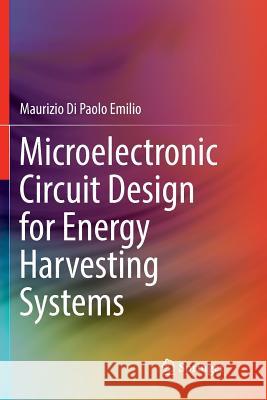Microelectronic Circuit Design for Energy Harvesting Systems » książka
topmenu
Microelectronic Circuit Design for Energy Harvesting Systems
ISBN-13: 9783319837758 / Angielski / Miękka / 2018 / 169 str.
Microelectronic Circuit Design for Energy Harvesting Systems
ISBN-13: 9783319837758 / Angielski / Miękka / 2018 / 169 str.
cena 326,93 zł
(netto: 311,36 VAT: 5%)
Najniższa cena z 30 dni: 325,42 zł
(netto: 311,36 VAT: 5%)
Najniższa cena z 30 dni: 325,42 zł
Termin realizacji zamówienia:
ok. 20 dni roboczych.
ok. 20 dni roboczych.
Darmowa dostawa!











